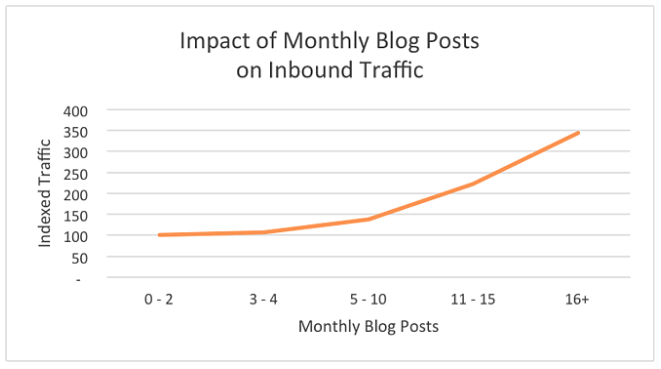How often should a B2B company be blogging? According to HubSpot, "Companies that published 16+ blog posts per month got almost 3.5 times more traffic than companies that published between 0 - 4 monthly posts." Publishing once a week or so simply isn't enough for most companies to enjoy the results they seek through corporate blogging.


On the other hand, publishing four times a week might seem unattainable. Hiring a dynamite content marketing team (ahem) is one place to start. Indeed, most of our clients start with twice-weekly blogging and work up to daily posts over time.
One way to increase blogging frequency is to enlist employees as authors or editors for updating existing content. After all, they are already subject matter experts, and their interactions with customers give them unique insight into important topics. Turning your employees into publishing pros might take some work, but it can also help add new depth to your B2B blog. The key is to arm employees with this list of corporate blogging "do's" and "don'ts."
Keep Your Purpose(s) in Mind.
We tend to think about blogging from an SEO perspective, but that tends to hone in the focus on choosing the right keywords—after all, we're writing all this content to help us "get found” by search engines. And that’s certainly an important function of blogging. But also keep in mind that blogging has three other key benefits:
-
Establish the author as a thought leader: Every article a team member writes is an opportunity to showcase the team member's deep expertise or unique insight as a subject area expert.
-
Position the company and its products: Every article is an opportunity to share your company's unique value proposition.
-
Generate qualified leads for marketing and sales: The end of a blog article is the perfect place to put a call-to-action (CTA), inviting readers to share their email addresses to receive more information (such as a case study or white paper).
So we have three objectives with every blog article:
-
Create informative, relevant, and engaging content for your readers
-
Create SEO-friendly content for search engines
-
Establish professional credibility and trust
To that end, the following recommendations will help you achieve all three objectives:
-
Begin with the end in mind: This might sound like a self-serving recommendation from the marketing team, but think first about your CTA—what do you want people to DO when they finish reading? Schedule a demo. Download a specific case study. Be sure to choose something that ties in with your topic.
-
Choose a succinct title: The ideal title length is 60 characters, and titles that are 8-14 words long get the most engagement on social media. Twitter is on the shorter end of that range, while Facebook and LinkedIn are on the longer end of the range. Lists generally do well (ex: 5 reasons to...), but they work best in B2C settings. We've written a whole article on headlines.
-
Feel free to get a little long-winded: (Okay, not too long-winded…) Studies show that Google and other search engines increasingly prefer longer content—think 1,500 to 2,000 words.
-
Think about how people read online: People tend to process online content more than they would print. It's important to make content more “skimmable” on the blog. This means blog authors will benefit from writing shorter paragraphs, subheadings, and bulleted or numbered lists where appropriate.
-
Include pictures: Studies also consistently show that including pictures increases people's engagement: they're more likely to keep reading, click on links or CTAs, etc. Even using stock images is preferable to publishing an unillustrated article.
Looking for a good model? Check out this UberCloud post on "cloud technologies in the pharmaceutical industry." "Why Software Companies Should Educate Customers" might also be handy.
Bad Blogging Habits to Avoid
In the B2B world, some of the most obvious blogging "don'ts" are using clickbait titles, including links too early or too often; and adopting an overly casual tone. Other less obvious bad habits include the following:
-
Neglecting the organizational/visual elements of the article: Most people skim articles online, and text features like sub-headings, bulleted lists, and images make content more "skimmable." It can be helpful to do a rough outline of your article before you start writing, which encourages you to break down your topic into logical sections that can become your sub-headings.
-
Failing to keep the ultimate purpose in mind: Ultimately, we're blogging to enhance our sales and marketing. If you're not sure how your article might fit with marketing objectives, we're happy to explain and help you find a "marketing-friendly" angle for your article.
For more tips on growing through content marketing, download our guide to unlocking business growth.











Leave a Comment